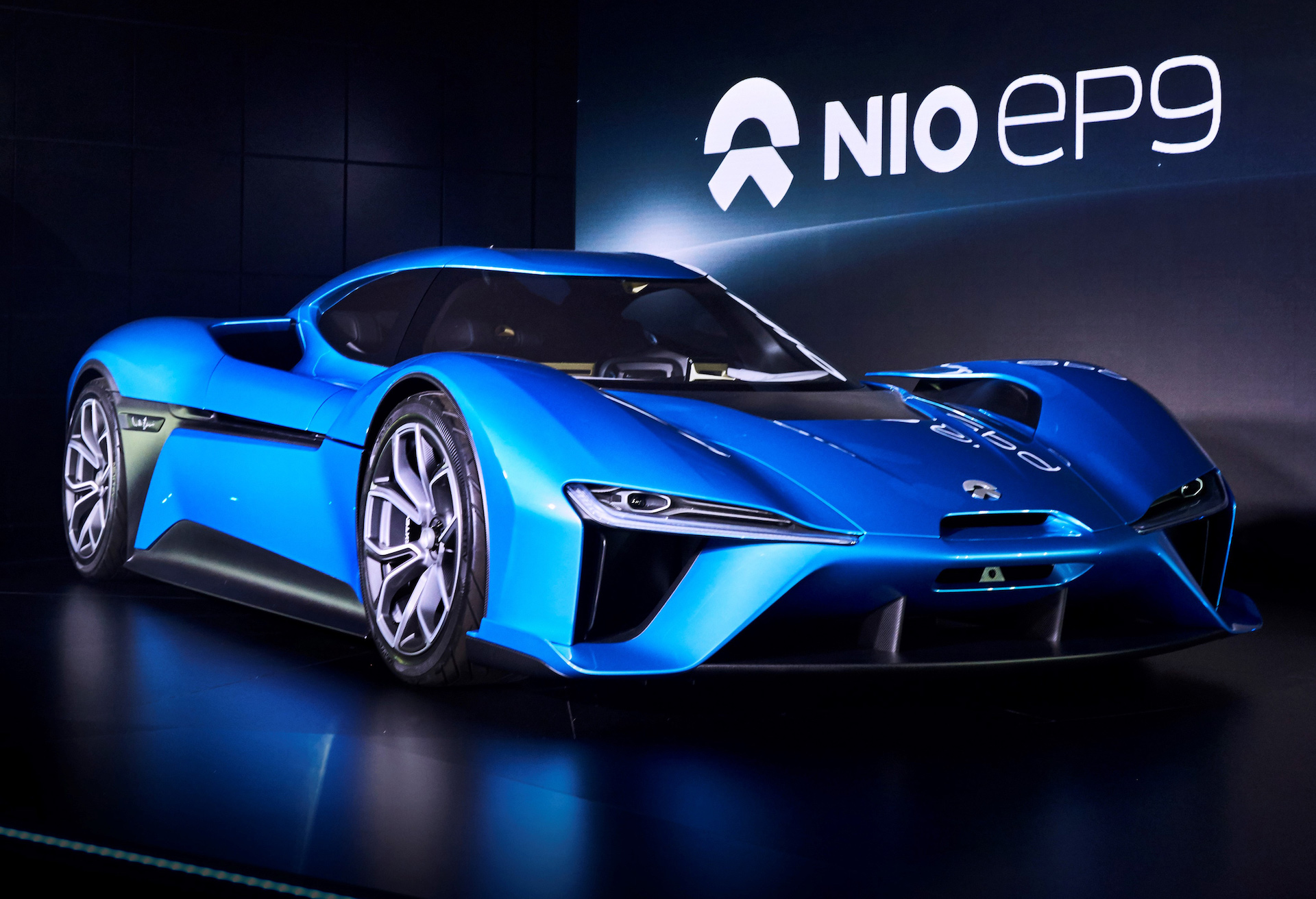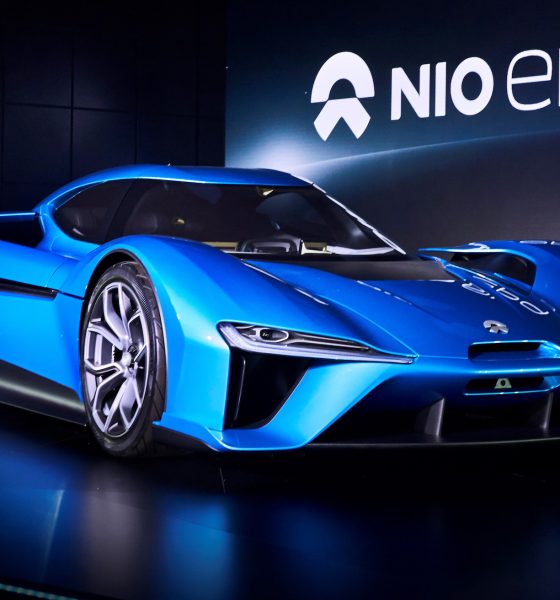

Lifestyle
Despite Tesla’s success, VCs remain slow to invest into electric vehicle startups
This post was originally published on NextMobility.co
As investors continue to become more interested in the future of mobility, electric vehicle startups are commanding significant investment money to disrupt the 120-year-old automotive market. But are Venture Capitalists forking over enough money to move the industry forward in a meaningful way? A new report by tech intelligence platform CB Insights reveals that EV tech startups received $2.2B in funding in 2016. While the amount may seem large, it pales in comparison to the ride-sharing industry, which fetched $10.8B in funding. So the real question is, why are investors still so hesitant to fund the emerging mobility industry?
An Industry Hurt by the Past

Justin Kan, from Y Combinator, on stage during the 2014 TechCrunch Disrupt Europe/London at The Old Billingsgate on October 20, 2014 in London, England. (Photo by Anthony Harvey)
To really understand why VCs are still hesitant to fund electric car startups, it’s important to hear from leaders in the VC space. I reached out to famed startup guru, Justin Kan, to understand why the industry is still hesitant. Kan was the founder of Twitch, sold to Amazon for nearly $1B in 2014, and the brother of Daniel Kan, who is the co-founder of Cruise Automation, which was sold to GM for $1B last year. Kan responded on his new video Q&A platform, Whale, that, “It’s super, super hard to build a car. I think lots of people think that Elon Musk is a unique individual, uniquely capable of building an electric car. But there are many examples of people who have tried and failed, for example, Fisker.”
Kan isn’t wrong; the industry was riddled with very public failures, of which CB Insights highlights in their report. The history of very costly failures could be scaring many investors away from the sector, but when will the public perception change?
Tesla Inc. is arguably the most successful EV startup to date, as the company has now grown to employ over 30,000 workers worldwide and become the most valuable US automaker. Tesla had several VC firms backing the company before they went public in 2010, including DFJ, Capricorn Investment Group, Daimler, Google, DFJ Growth. But most notably, the company saw tens of millions of capital injected by its founder Elon Musk while the company was starting up.

Graphic from CB Insights’ report
While investors are still fighting to get their money in ride-sharing and autonomous vehicle technology companies, it has been clear that electric vehicles hold the best platform for the future of mobility companies. In the report from CB Insights, they highlight the synergies that electric vehicles and autonomous vehicles share. Electric vehicles have fewer components, enabling autonomous electric vehicles to travel nearly 18x more miles than internal-combustion engine vehicles without repairs or expensive operational costs.
“What would happen if a whole city converted all at once to self-driving cars? … people will be like, ‘This is paradise.’ You just push a button and a car pop ups and takes you wherever you want to go. You have more pedestrian space, and the air smells better.” – Chris Dixon, Partner at Andreessen Horowitz
Investors are certainly taking another look at the industry as more EV startups emerge on the scene with highly qualified engineers, and serious product and production plans underway. Lucid Motors is a prime example of an electric car startup that is emerging as a leading contender within the premium electric vehicle space. The Silicon Valley-based startup is currently looking for funding on its initial factory construction, to the tune of $240M. The company has raised $131M to date, led by CTO Peter Rawlinson, who also led the development of Tesla’s Model S sedan.
Only time will tell if investors have forgotten about failed EV startups from the past, and willing to make bets on the industry. After all, VCs did invest $120M in Juicero, an in-home juicing machine, that turns out to be completely useless.
Read the CB Insights complete report here.

Lifestyle
Tesla Model S Plaid battles China’s 1500 hp monster Nurburgring monster, with surprising results
There is just something about Tesla’s tuning and refinement that makes raw specs seem not as game-changing.

The Tesla Model S Plaid has been around for some time. Today, it is no longer the world’s quickest four-door electric sedan, nor is it the most powerful. As per a recent video from motoring YouTube channel Carwow, however, it seems like the Model S Plaid is still more than a match for some of its newer and more powerful rivals.
The monster from China
The Xiaomi SU7 Ultra is nothing short of a monster. Just like the Model S Plaid, it features three motors. It also has 1,548 hp and 1,770 Nm of torque. It’s All Wheel Drive and weighs a hefty 2,360 kg. The vehicle, which costs just about the equivalent of £55,000, has been recorded setting an insane 7:04.957 at the Nurburgring, surpassing the previous record held by the Porsche Taycan Turbo GT.
For all intents and purposes, the Model S Plaid looked outgunned in Carwow’s test. The Model S Plaid is no slouch with its three motors that produce 1,020 hp and 1,420 Nm of torque. It’s also a bit lighter at 2,190 kg despite its larger size. However, as the Carwow host pointed out, the Model S Plaid holds a 7:25.231 record in the Nurburgring. Compared to the Xiaomi SU7 Ultra’s record, the Model S Plaid’s lap time is notably slower.
Real-world tests
As could be seen in Carwow’s drag races, however, Tesla’s tech wizardry with the Model S Plaid is still hard to beat. The two vehicles competed in nine races, and the older Model S Plaid actually beat its newer, more powerful counterpart from China several times. At one point in the race, the Xiaomi SU7 Ultra hit its power limit due to its battery’s temperature, but the Model S Plaid was still going strong.
The Model S Plaid was first teased five years ago, in September 2020 during Tesla’s Battery Day. Since then, cars like the Lucid Air Sapphire and the Xiaomi SU7 Ultra have been released, surpassing its specs. But just like the Model Y ended up being the better all-rounder compared to the BYD Sealion 7 and the MG IM6, there is just something about Tesla’s tuning and refinement that makes raw specs seem not as game-changing.
Check out Carwow’s Model S Plaid vs Xiaomi SU7 drag race video below.
Lifestyle
500-mile test proves why Tesla Model Y still humiliates rivals in Europe
On paper, the BYD Sealion 7 and MG IM6 promised standout capabilities against the Model Y.

BYD is seeing a lot of momentum in Europe, so much so that mainstream media has taken every opportunity to argue that the Chinese automaker has beaten Tesla in the region. But while BYD sales this year in Europe are rising and Tesla’s registrations remain challenged, the raw capabilities of vehicles like the Model Y are difficult to deny.
This was highlighted in a 500-mile challenge by What Car? magazine, which showed that the new Tesla Model Y is more efficient, cheaper to run, and more reliable than rivals like the BYD Sealion 7, and even the nearly 400 KW-charging MG IM6.
Range and charging promises
On paper, the BYD Sealion 7 and MG IM6 promised standout capabilities against the Model Y. The Sealion 7 had more estimated range and the IM6 promised significantly faster charging. When faced with real-world conditions, however, it was still the Model Y that proved superior.
During the 500-mile test, the BYD nearly failed to reach a charging stop, arriving with less range than its display projected, as noted in a CarUp report. MG fared better, but its charging speeds never reached its promised nearly-400 kW charging speed. Tesla’s Model Y, by comparison, managed energy calculations precisely and arrived at each stop without issue.
Tesla leads in areas that matter
Charging times from 25% to 80% showed that the MG was the fastest at 17 minutes, while Tesla and BYD were close at 28 and 29 minutes, respectively. Overall efficiency and cost told a different story, however. The Model Y consumed 19.4 kWh per 100 km, compared to 22.2 for MG and 23.9 for BYD. Over the full trip, Tesla’s charging costs totaled just £82 thanks to its supercharger network, far below BYD’s £130 and MG’s £119.
What Car? Magazine’s testers concluded that despite BYD’s rapid sales growth and the MG IM6’s seriously impressive charging speeds, Tesla remains the more compelling real-world choice. The Model Y just offers stability, efficiency, and a proven charging infrastructure through its Supercharging network. And as per the magazine’s hosts, the Model Y is even the cheapest car to own among the three that were tested.
Watch What Car? Magazine’s 500-mile test in the video below.
Lifestyle
Tesla Cybertruck slapped with world’s least intimidating ticket, and it’s pure cringe
One cannot help but cringe and feel second-hand embarrassment at the idea of a person just driving around with a stack of these babies.

A Cybertruck parked at Stanford Shopping Center in California was recently hit with what might be the most try-hard piece of paper ever slipped under a wiper blade: a “fake citation” accusing the driver of supporting a “fascist car.”
The note, shared on X by Tesla staff program manager Ryan Torres, quickly made the rounds on X, where it quickly gained attention as an example of how not to protest.
The world’s least intimidating ticket
According to the citation, the supposed “violation” was “driving a fascist car.” The remedial action? Take the bus, call an Uber, or ride a bike. The note also dubbed Elon Musk a “chainsaw-wielding Nazi billionaire.” Now, protests against Tesla and Elon Musk have become commonplace this year, but one cannot help but cringe and feel second-hand embarrassment at the idea of a person just driving around with a stack of fake anti-Tesla/Musk citations.
Torres pointed out the irony himself in his post on X. Tesla currently employs over 140,000 Americans, and SpaceX has put the U.S. firmly back at the top of space technology. As Torres put it, maybe the person behind the world’s least intimidating ticket should “read a book on innovation before vandalizing” other people’s property.
Peak performative clownery
Not to mention that the fake ticket’s logic collapses under its own weight. EVs like the Cybertruck are literally designed to reduce emissions, not “destroy the economy.” If anything, Tesla has bolstered the United States’ economy by fueling jobs in engineering, manufacturing, and clean energy. It’s not the first time a Tesla has been the target of vandalism or politically charged notes, but this one stands out for sheer cringe value.
Torres summed it up neatly: “Peak clownery.” On that point, at least, the citation earns full marks. In a way, though, perhaps cringe fake tickets are not as bad as the literal firebombs that were being thrown at Tesla stores and cars earlier this year because some critics were gleefully misinformed about Elon Musk.









